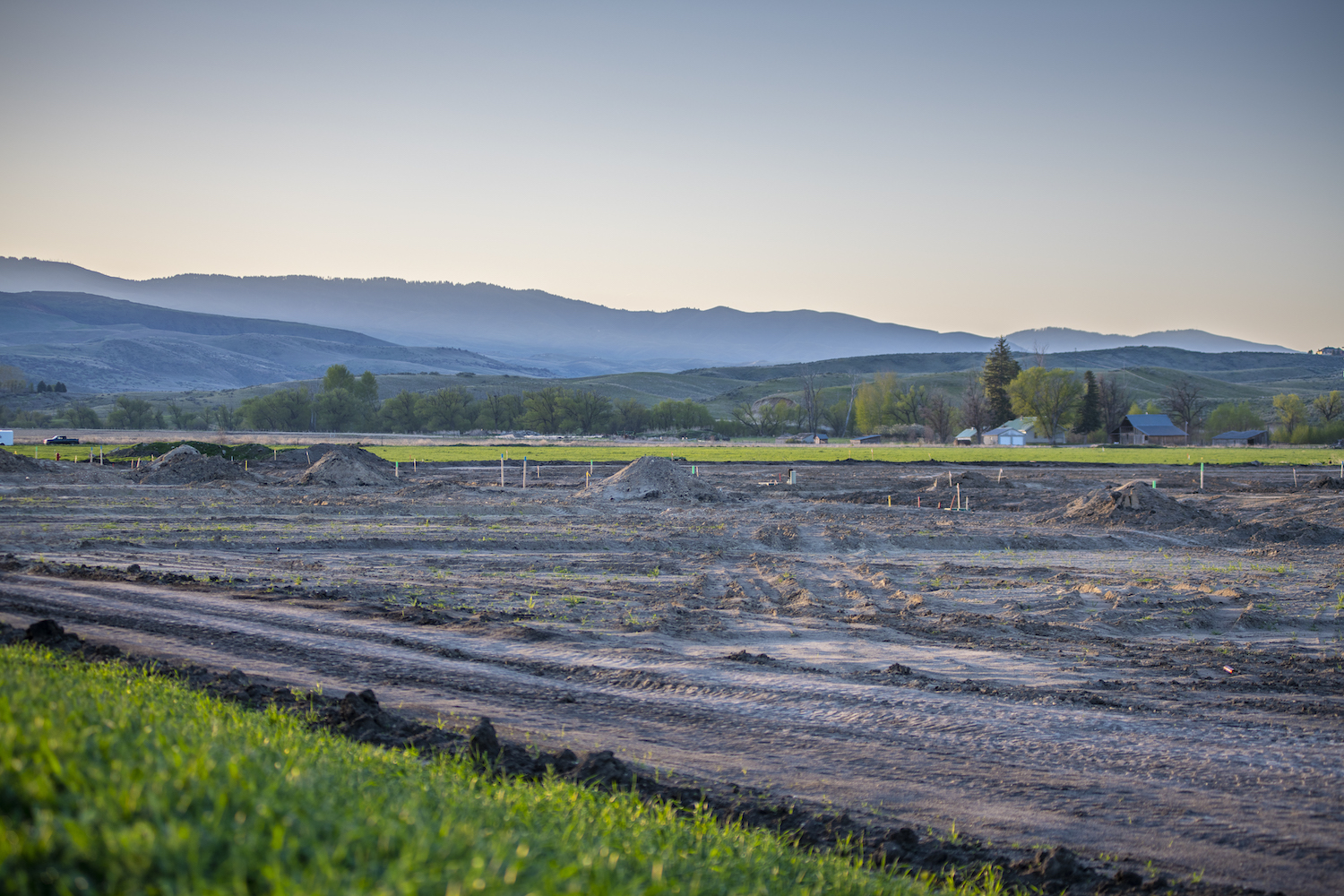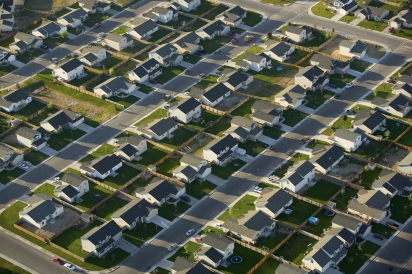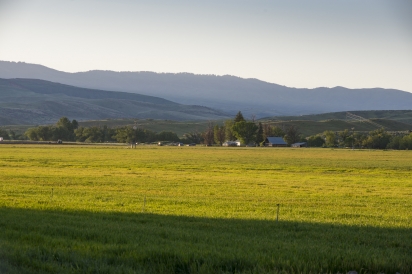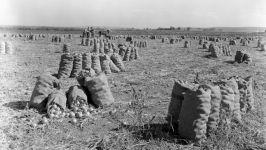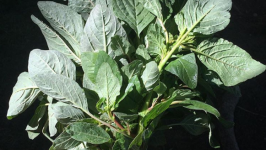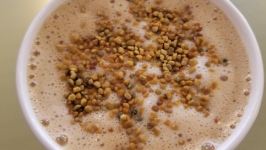The Great Treasure Valley Tradeoff
Despite the clouds it was a clear enough day for Jenna Narducci, leaning against a wooden fence in the foothills above Eagle, Idaho, to see the Owyhee Mountains miles away in the distance. Getting to such a scenic vantage point meant driving from the largest city in the state along a state highway, past residential developments under construction and horses grazing on high-desert shrubs.
“We take for granted that we have these open spaces we’re looking at right now, just this patchwork of native sagebrush and pastures and farmland, and that feels like it’s not factored in when we’re putting in new developments,” she said. “And again, just to hammer this down, that is what is drawing people here.”
By the year 2100, the Treasure Valley could be virtually unrecognizable to the people who live there today. It’s predicted to undergo a population explosion, and the ensuing urban development will likely transform the historical farmland, wetlands and high-desert steppe of Ada and Canyon counties. It’s a scenario that would have profound social and economic impacts on the entire region.
A Boise State University graduate student, Narducci was one of the researchers behind the October 2017 study, “Projecting Urban Expansion in the Treasure Valley to 2100,” which outlined the mechanism by which new development will replace open spaces. Her role was to quantify the impact of urbanization and package the data in formats that would be useful to stakeholders like lawmakers, community leaders, developers and businesses. The early focus in her research boiled down to two questions—what are Treasure Valley residents’ values toward land use, and how might those values be affected by land use change? A pattern quickly emerged.
“It turns out the major driver for [land use change] is pretty obviously urbanization,” Narducci said. “We started making those connections between how they value resources here in the Valley and how those would be impacted by urbanization.”
Population growth will be the engine of that shift. The Community Planning Association of Southwest Idaho estimates there were approximately 646,000 people living in Ada and Canyon counties in 2015. By 2040, it estimates there will be 675,000 people living in Ada County alone, 60,000 of whom will live in unincorporated areas.
The Boise State researchers looked out further, to the year 2100, when there could be between 1.25 million and 1.75 million people living in the area. Currently, travelers trying to travel between Boise, Caldwell, Kuna, Nampa and Star must pass through stretches of farmland, but one high-population-growth model put forth in the Boise State study envisions solid urban development from well east of Boise all the way to Parma near Idaho’s border with Oregon. Narducci painted a picture of what life might be like in the Treasure Valley under those conditions.
“To get anywhere you’re dealing with a ton of traffic. A lot of your time is just spent on the road looking at highways or looking at these gross strip malls everywhere,” she said. “I feel like there are a lot of qualities that we take for granted now that are going to be impacted. Air quality has changed. We’re going to see a continuation of that. . . .We’re not going to have these picturesque hillsides, driving by cows grazing in the sagebrush, these pastures and orchards everywhere.”
Ag-related activities have long been central to land use in the Treasure Valley, but their decline, particularly in Ada County, is nothing new. Statewide, the number of farms in the Gem State has been on the rise, but in 1939, 17% of Ada County was being used for farmland; by 2014, it had been reduced to 8%. Across the Treasure Valley, the accordioning of agriculture is uneven. According to the USDA, there were 2,420 individual farms in Ada County in 2002. By 2012, that number had reduced by nearly 200. In Canyon County during the same period, the number of farms increased from 2,233 to almost 2,430—a sign of the sliding center of gravity in the Treasure Valley where it comes to farming.
Shifts in land use are already casting waves within regional agriculture. One of the better-known examples has been the ongoing efforts to tap the brakes on the Dry Creek Ranch housing development in the Dry Creek Valley. That development would be seated on some of the best topsoil in the Treasure Valley, and its opponents allege the new community would put critical pressures on nearby farms, like cross contamination of pest and herbicides, increased traffic on nearby roads and increased demand for water.
These kinds of pressures will increasingly affect small and medium sized farms across the region, and large operations aren’t immune. The Treasure Valley is one of five hubs of the global seed industry, producing approximately 50 seed crops in the region and shipping them to 120 countries. In Ada and Canyon counties, it’s a $550 million industry. For Roger Batt of the Idaho Seed Association, the Boise State land use study was a wake-up call.
“I’m a fifth-generation Canyon County resident. Seeing those statistics, it was a little bit alarming,” he said. “I do know from the seed industry side of things there’s a lot of concern about the future.”
Like smaller, multi-crop farms like those in the Dry Creek Valley, seed-producing operations are sensitive to who their neighbors are. A backyard garden growing onions or carrots could inadvertently crosspollinate a commercial crop. For reference, onion and carrot seed growers require one to two miles of isolation. Similar principles apply for herbicides and pesticides. In some cases, Batt said, good fences aren’t enough to make good neighbors, and farmers will have to educate people living in nearby developments about their possible impact on crops.
“If we’re going to find an equitable solution, we’re going to have to do it in the next five to seven years, otherwise we’re going to be behind the curve,” he said.
For growers big and small across the Treasure Valley, the situation can be summed up as a problem of supply and demand. As more people crowd into the area, the value of limited resources like land and water increase, possibly edging some players off the map. In an emailed statement, George Crookham, owner of Caldwell-based seed producer Crookham Company, offered a grim assessment of the stakes of the game.
“It is very simple: Crookham Company is no different than any other agriculture business that relies on agriculture products. Without farmland we cannot operate in the Treasure Valley and we will be forced to move our business elsewhere,” he wrote. Development may be bearing down on rural spaces, but the people who live in the Treasure Valley take a lot of pride in being close to nature and the outdoors. In 2015, residents of Boise approved a two year, $10 million Boise Foothills preservation levy by an overwhelming majority, effectively agreeing to tax themselves to save the Foothills.
There have been few efforts on a similar scale to save rural areas, but broadly, residents agree that agriculture is important to residents on a cultural level. In the 2016 Boise State “Treasure Valley Policy Survey,” 92.1% of respondents described the quality of life in the area “good” or “excellent.”
That same survey, however, pointed to some of the angst residents feel about the growth of the region. A slim minority of respondents said they were “very” or “extremely” concerned with farmland loss (47%), and 46.1% of respondents said they were just as concerned with the loss of family farms. Open spaces, and proximity to nature and farming, are important parts of many Treasure Valley residents’ identities.
“People aren’t just thinking about the economics; they’re also thinking about the ways agriculture is part of the culture of this region,” said Rebecca Som Castellano, an assistant professor of sociology at Boise State, who has worked on numerous projects with the researchers responsible for the “Projecting Urban Expansion” study.
There is a place where urban and rural, culture and economics meet in the Treasure Valley. On April 8, the Boise Farmers Market reopened after the winter break, and though the weather was a mix of sunshine and rain, people came out in force to get their hands on the first fresh produce of the year. The vendors, many of them representing small farms and ranches, spoke about how they felt about encroaching urban development.
“People are really concerned about how close their food is [grown] to where they’re buying it, and if we keep pushing farmers out, that radius of where food’s coming from is getting farther away,” said Davis McDonald of Fiddler’s Green Farm in the Dry Creek Valley.
Ian Kilgore, owner of True Roots Organics, moved this year from the Marsing area to Nyssa, Oregon, where he was able to purchase his own land. Before he pulled up stakes for Oregon, he said he began to notice the tell-tale signs that urban development was edging closer to his farm. Over time he noticed there were more people on the roads, particularly on the weekends, and the once-open land between his farm and the market was being converted into subdivisions. His take on the future of the area near Marsing sounded a lot like George Crookham, the seed grower.
“You can see the population coming further out into the south of where agricultural land is. You can see those suburbs moving closer and closer to the Sunnyslope area, [which] is going to be more of a high-end area with very nice houses on the river, and that eventually they’ll take over all the agricultural land,” he said.
Jenna Narducci, the Boise State researcher and graduate student, didn’t have quite so dire a vision, but doubled down that land-use change will have far-reaching effects on everyone from seed growers in Canyon County to people living in downtown Boise.
“When you see those huge monoculture-looking crops, you’re looking at a large part of the economic backbone of the valley here. But losing those smaller farms—I feel like a lot of people relate that to their quality of life here. Being able to drive along Hill Road and seeing a lot of those smaller farms sprinkled throughout, it’s part of that everyday life,” she said.
Community Planning Association of Southwest Idaho
Dry Creek Ranch
Idaho Seed Association
Crookham Company
Rebecca Som Castellano
Boise State | @boisestateuniversity
Boise Farmers Market | @boisefarmersmarket
Fiddler’s Green Farm | @fiddlersgreenfarm
True Roots Organics | @truerootsorganics


